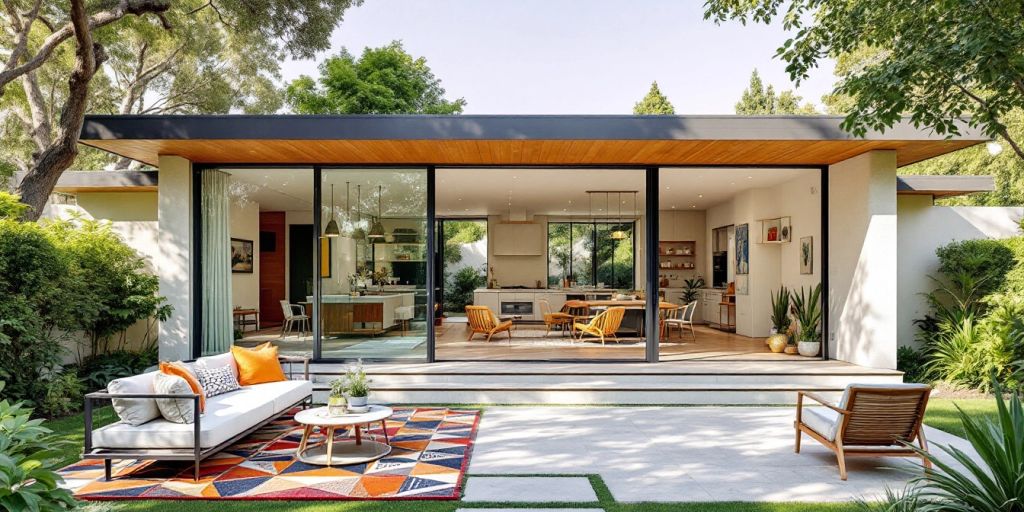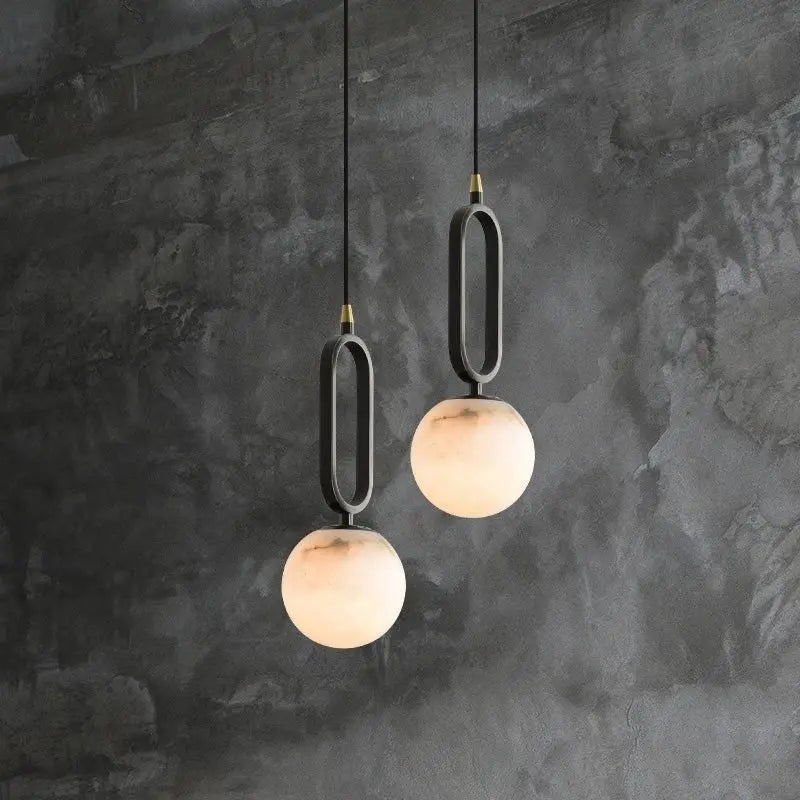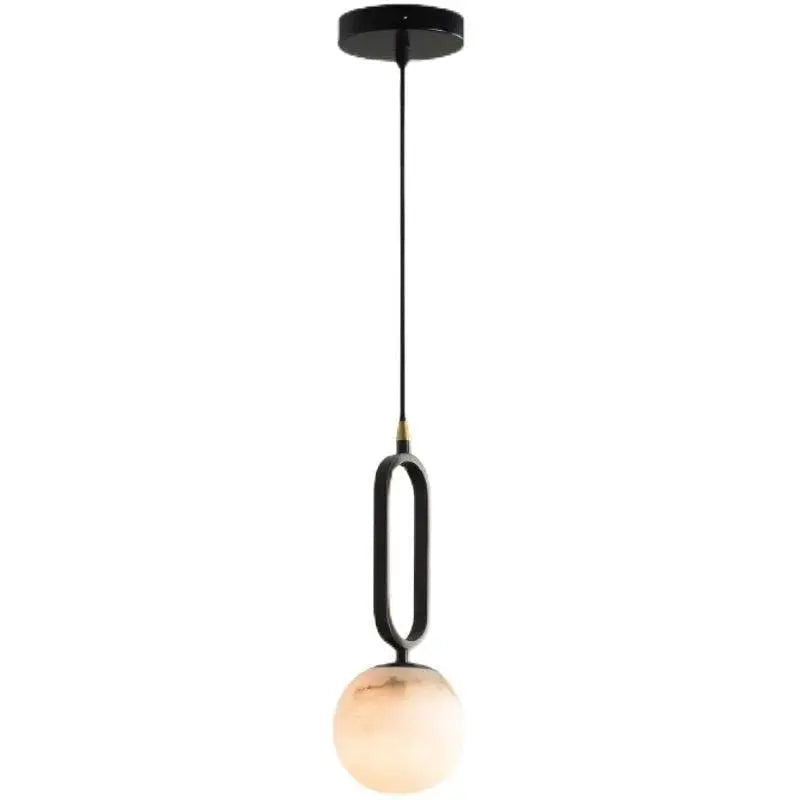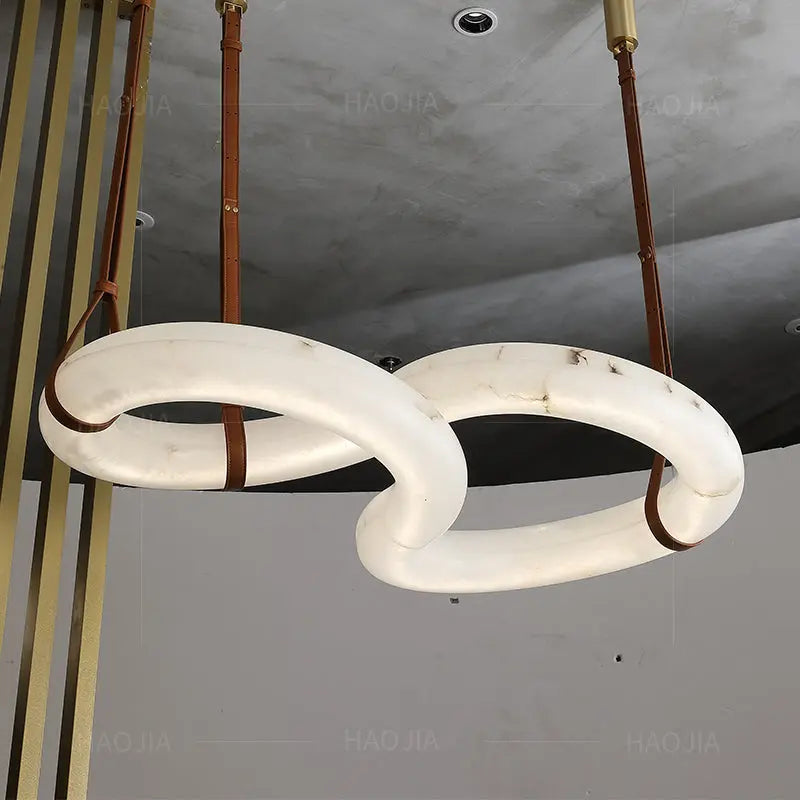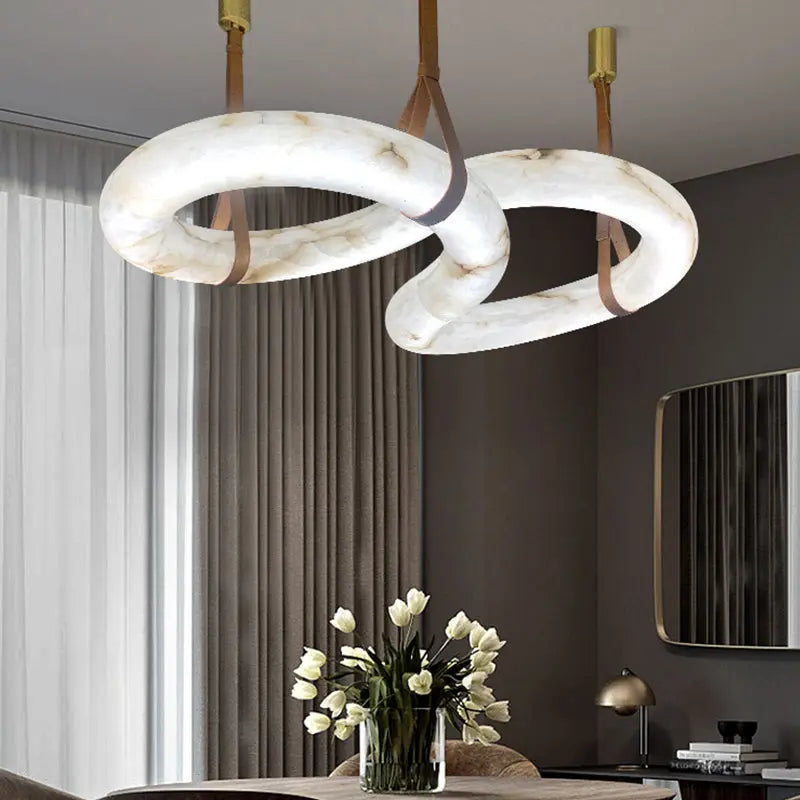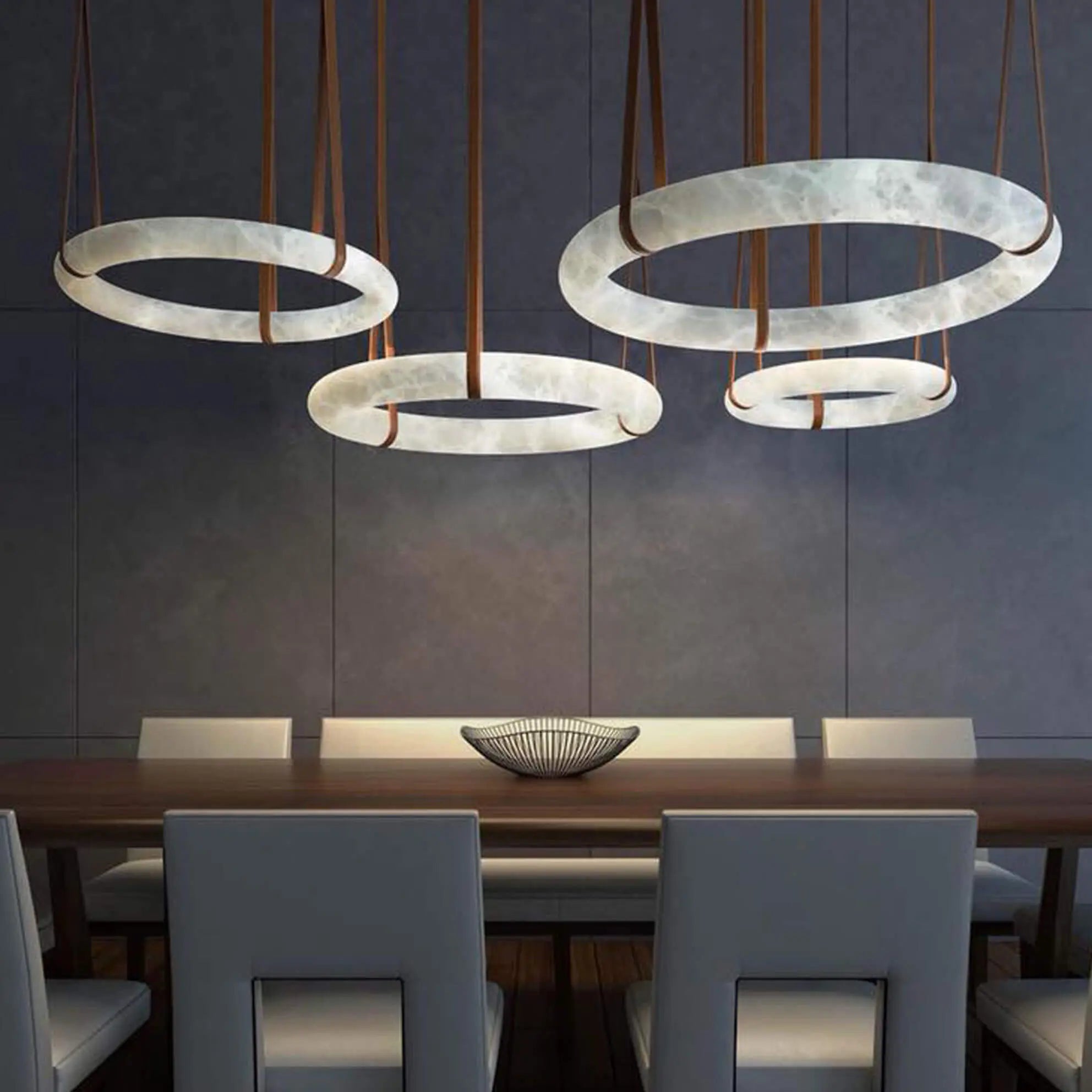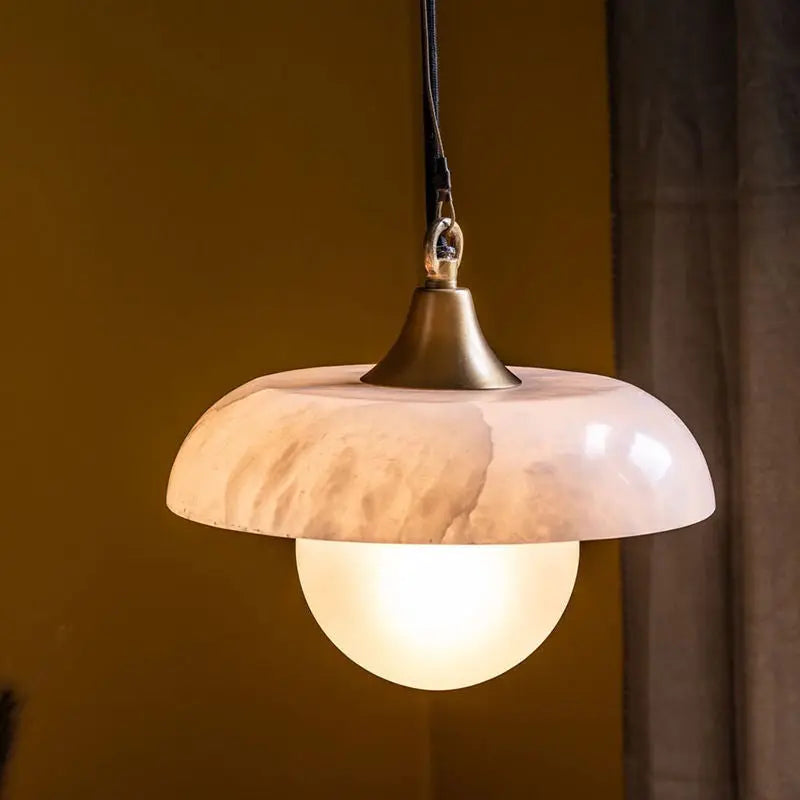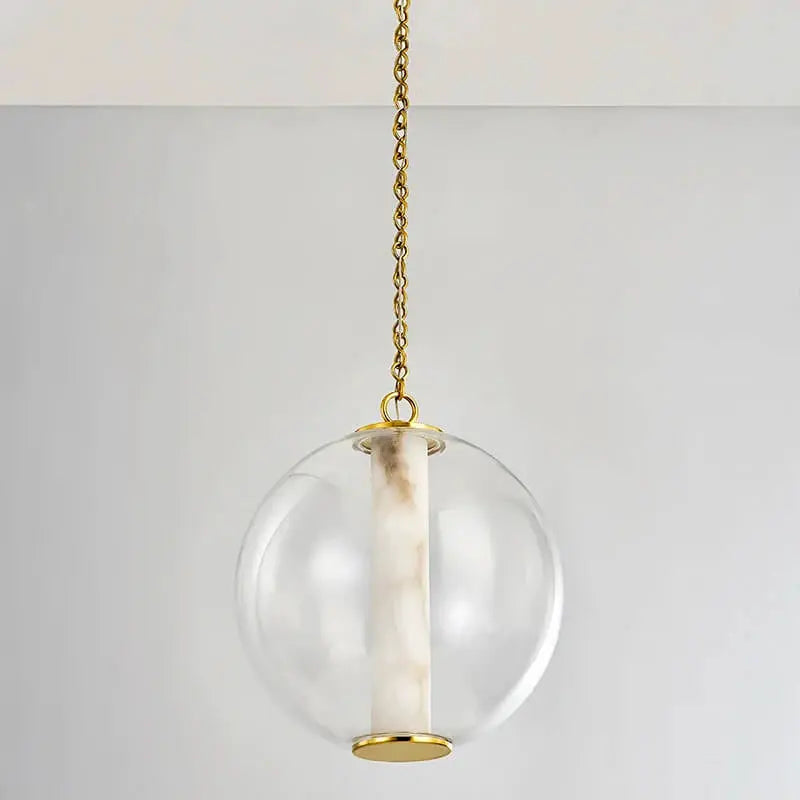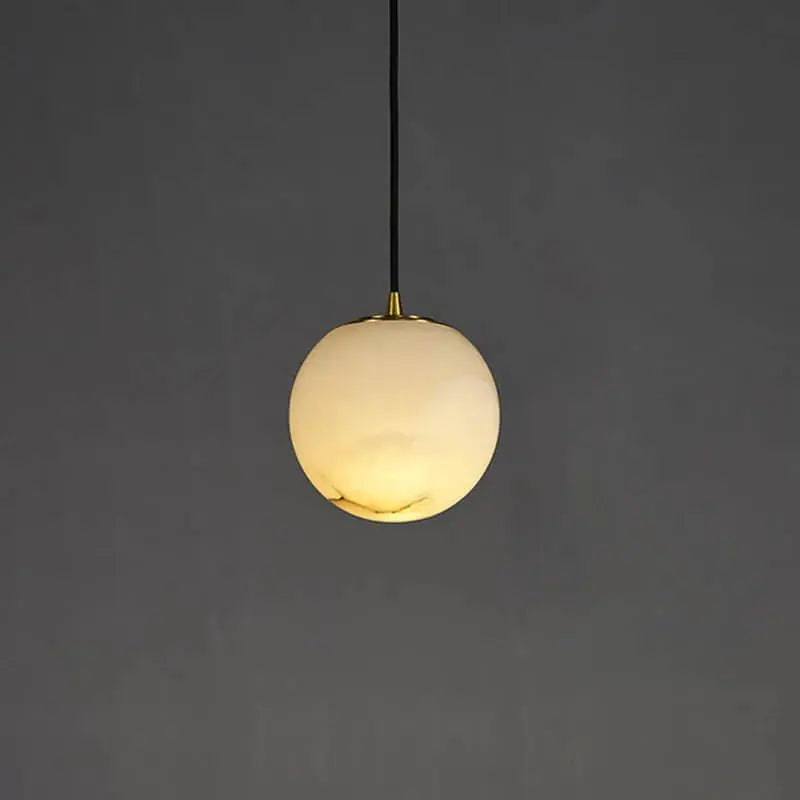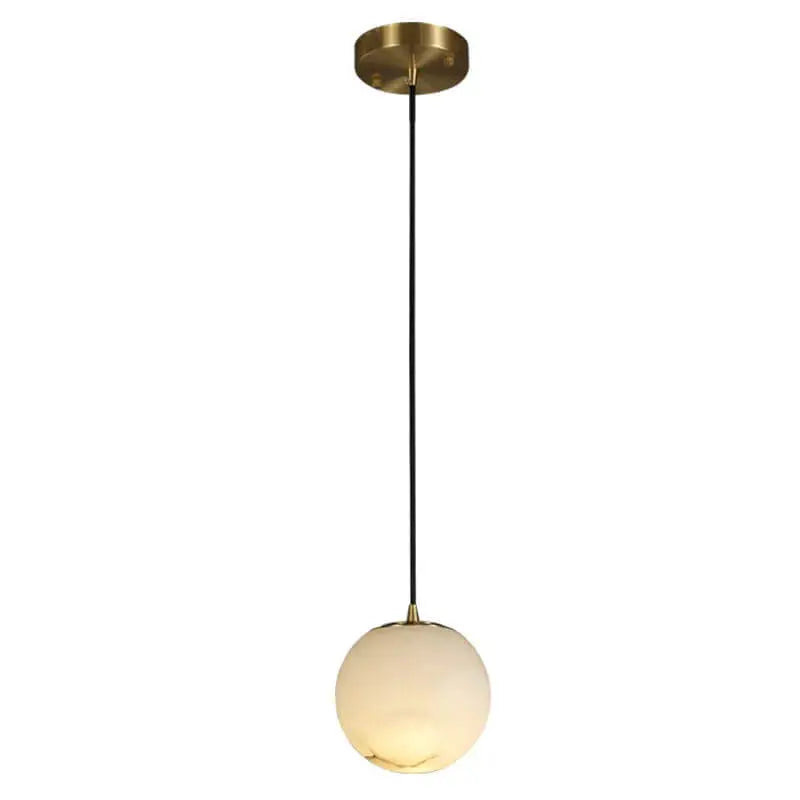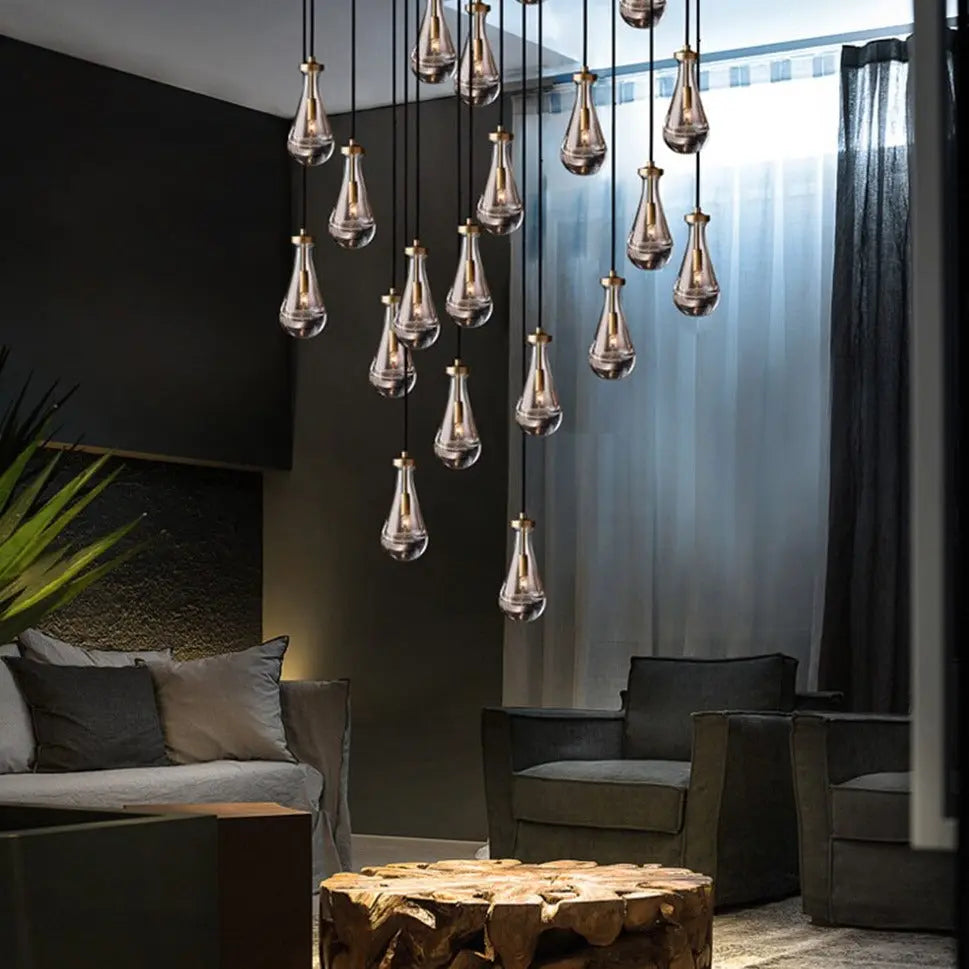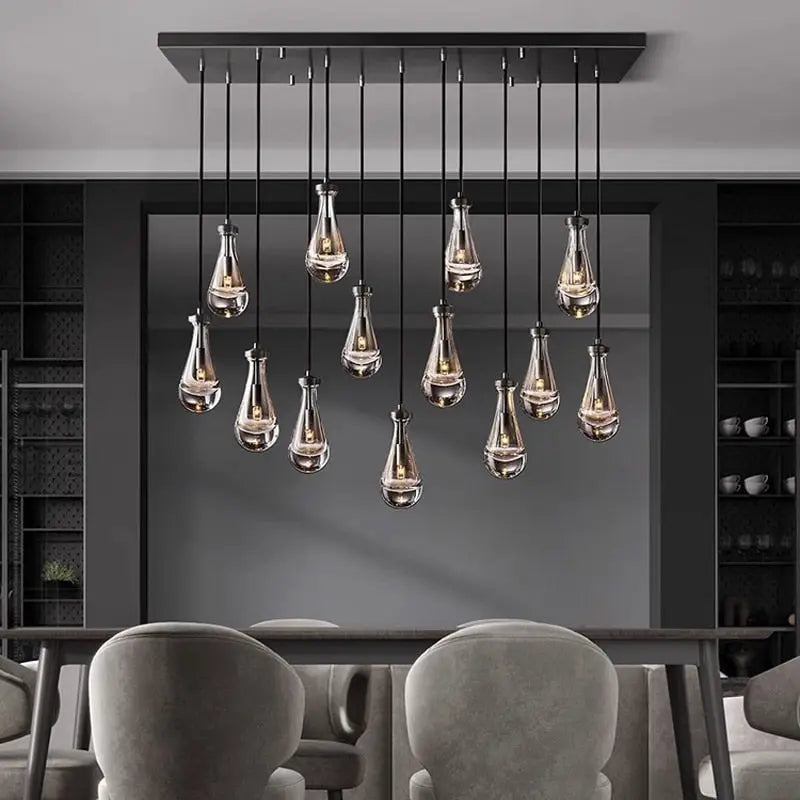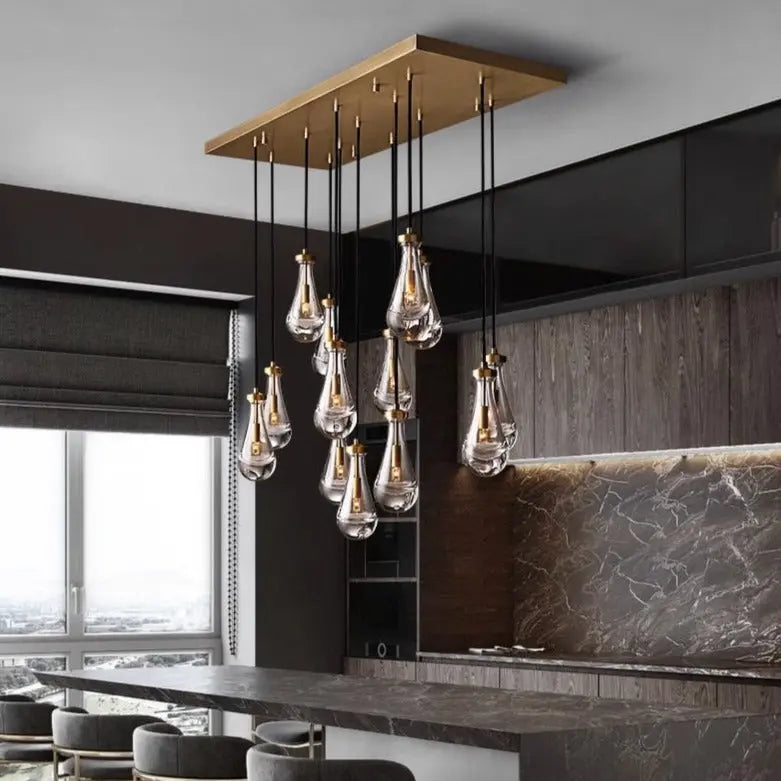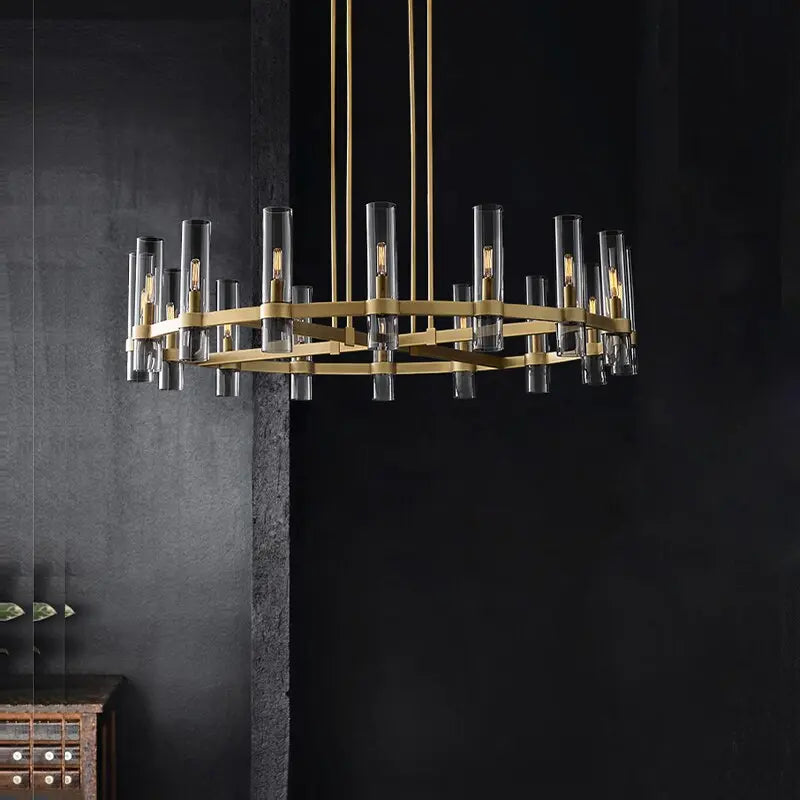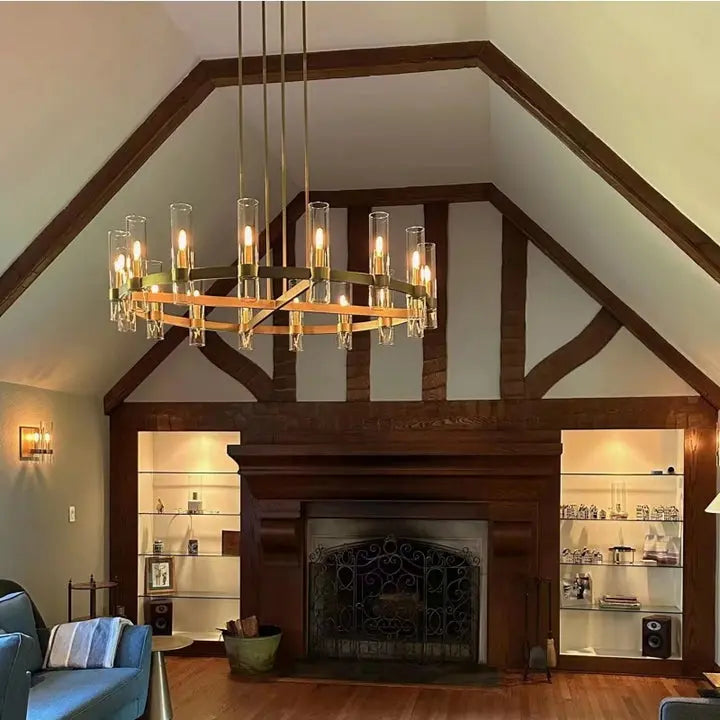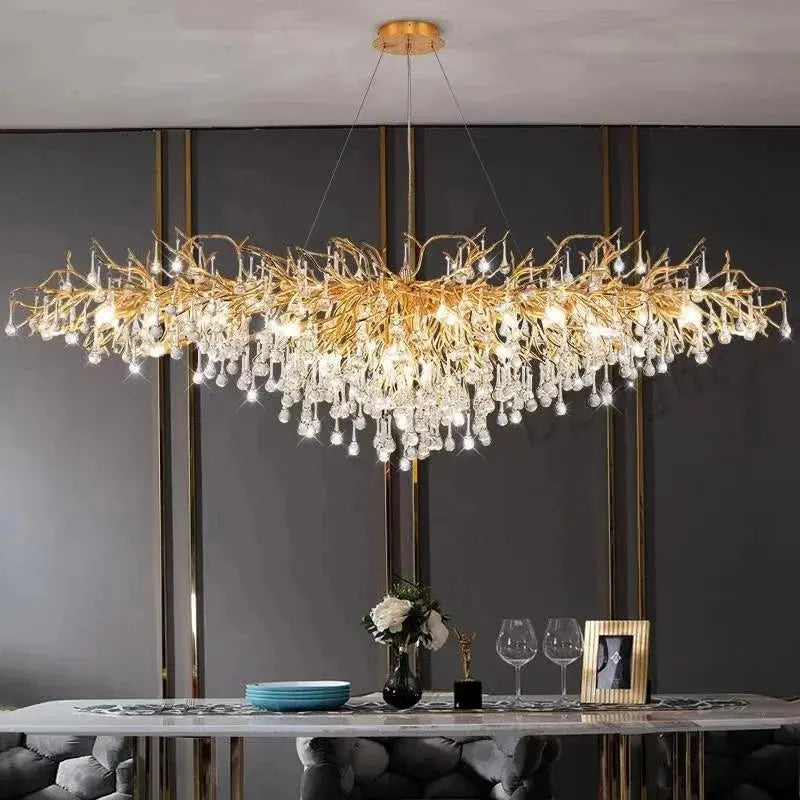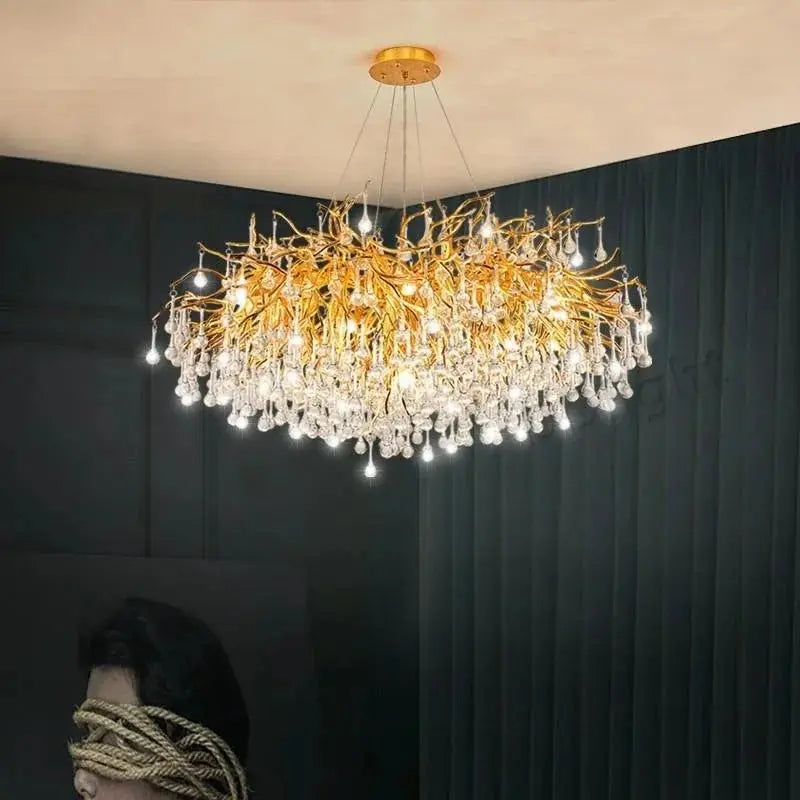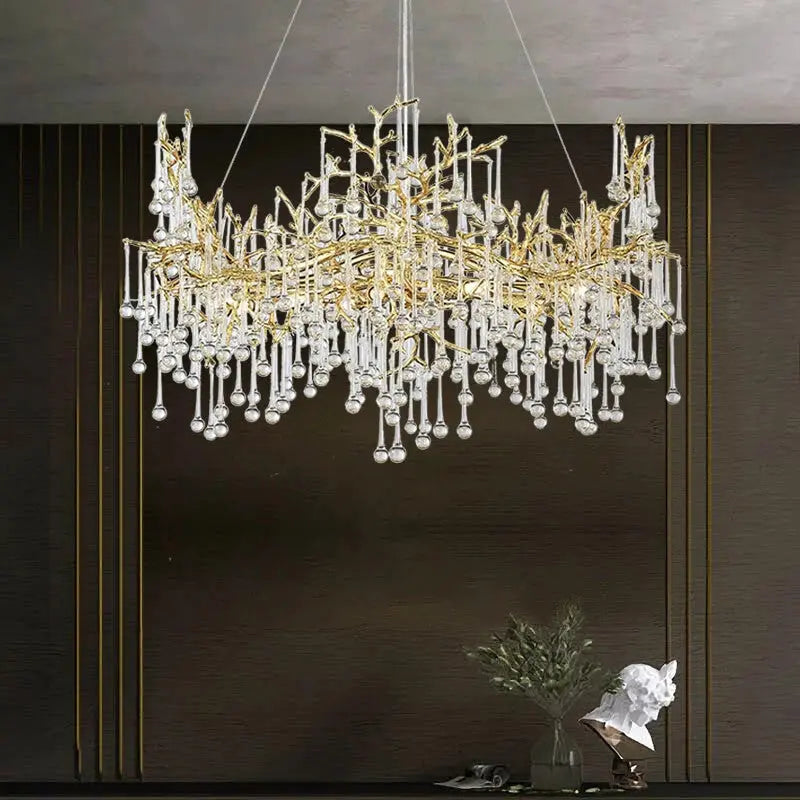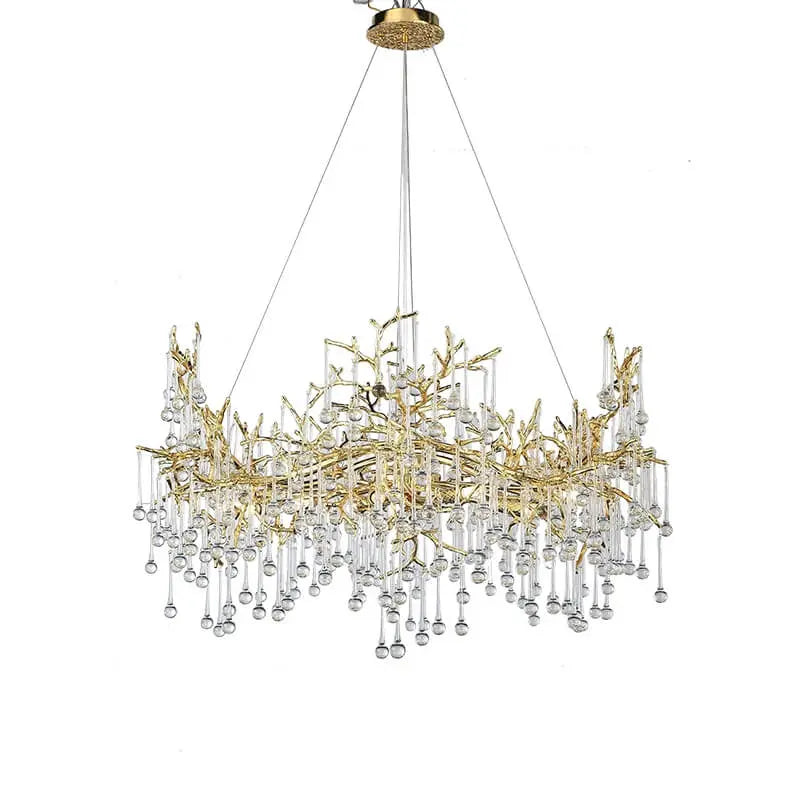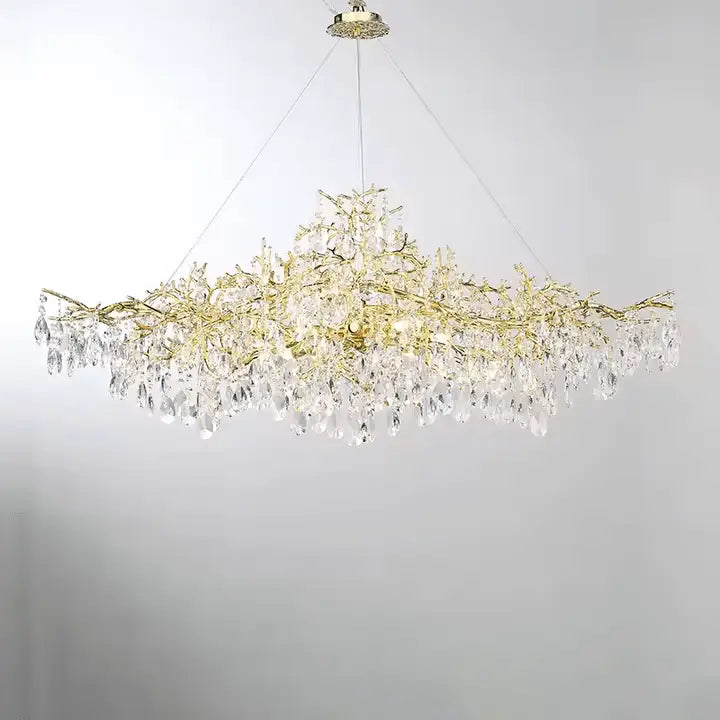Mid-Century Modern homes are a unique blend of style and function that have captivated people for decades. Originating in the mid-20th century, this design movement emphasizes simplicity, open spaces, and a connection to nature. In this guide, we will explore the origins, features, and enduring appeal of Mid-Century Modern design, as well as how to incorporate it into your own home.
Key Takeaways
- Mid-Century Modern design started after World War II, focusing on clean lines and functionality.
- Key figures like Frank Lloyd Wright and Charles Eames greatly influenced this design movement.
- These homes often feature large windows and open spaces that connect indoors with the outdoors.
- Iconic furniture pieces, like the Eames chair, are essential in capturing the Mid-Century aesthetic.
- This style remains popular today due to its timeless appeal and versatility in modern homes.
The Origins and Evolution of Mid-Century Modern Homes
Mid-century modern homes emerged after World War II, a time when people sought new ways to live and design their spaces. This style, which flourished from the 1940s to the 1960s, is known for its blend of beauty and practicality. Here’s a closer look at its origins:
Post-War Influences on Design
- The end of the war brought a wave of optimism and creativity.
- Architects aimed to create homes that were not only stylish but also functional.
- The focus was on open spaces and a connection to nature, making homes feel larger and more inviting.
Key Architects and Designers
Some influential figures in this movement include:
- Frank Lloyd Wright - Known for his organic architecture.
- Rudolph Schindler - Pioneered the use of open floor plans.
- Richard Neutra - Focused on integrating homes with their surroundings.
The Spread of Mid-Century Modern Style Globally
- This design style quickly spread beyond the U.S., influencing homes worldwide.
- Countries like Sweden and Brazil adopted and adapted mid-century principles.
- The style remains popular today, celebrated for its timeless appeal and simplicity.
Mid-century modern design is not just a style; it’s a way of living that embraces simplicity and functionality.
In summary, the evolution of mid-century modern homes reflects a significant shift in how we view architecture and design, emphasizing a harmonious relationship with nature and a commitment to functional beauty.
Architectural Features of Mid-Century Modern Homes
Mid-century modern homes are known for their unique architectural features that blend beauty with functionality. These homes emphasize a connection with nature and open spaces.
Integration with Nature
- Large windows that invite natural light.
- Use of natural materials like wood and stone.
- Outdoor spaces that seamlessly connect with indoor areas.
Open Floor Plans and Large Windows
- Open layouts that promote flow between rooms.
- Expansive glass windows that enhance views and light.
- Spaces designed for social interaction and family gatherings.
Minimalist Aesthetics
- Clean lines and uncluttered spaces.
- A focus on essential furniture and decor, avoiding excess.
- Use of geometric patterns that add visual interest without overwhelming the space.
Mid-century modern homes are not just about style; they represent a way of living that values simplicity and harmony with the environment.
These architectural features make mid-century modern homes a popular choice among those seeking affordable homes that are both stylish and functional. Whether you live in townhouse homes, apartment homes, or loft homes, the principles of mid-century design can be adapted to fit various living spaces, making it a timeless choice for contemporary homes.
Iconic Furniture and Decor in Mid-Century Modern Homes
Mid-Century Modern homes are known for their unique furniture and decor that blend style with functionality. This design movement, which flourished from the 1930s to the 1960s, introduced pieces that are still celebrated today.
Signature Furniture Pieces
- Eames Lounge Chair: A classic that combines comfort and elegance.
- Noguchi Table: A sculptural piece that blurs the line between art and furniture.
- Tulip Table: Known for its sleek, organic shape, perfect for dining areas.
Use of Geometric Patterns
Mid-Century decor often features geometric patterns that add visual interest. These can be found in:
- Rugs: Often showcasing bold shapes and colors.
- Wall Art: Abstract designs that complement the minimalist aesthetic.
- Textiles: Fabrics with striking patterns used in cushions and curtains.
Mixing Materials and Textures
A hallmark of Mid-Century Modern design is the combination of various materials. Here are some common pairings:
- Wood and Metal: For a warm yet industrial feel.
- Glass and Fabric: To create a light and airy atmosphere.
- Plastic and Wood: Offering a playful contrast in furniture design.
The beauty of Mid-Century Modern design lies in its ability to create harmony through simplicity and elegance. Captivating chandeliers and lighting fixtures, like the luxury marble chandelier, play a crucial role in enhancing the overall aesthetic of these homes.
Incorporating these elements into your space can help you achieve that timeless charm that Mid-Century Modern homes are known for.
Incorporating Mid-Century Modern Design in Your Home
To bring the mid-century modern aesthetic into your space, start with the right furniture. Here are some key pieces to consider:
Choosing the Right Furniture
- Eames Lounge Chair: A classic that combines comfort and style.
- Tulip Table: Perfect for dining areas, offering a sleek look.
- Wassily Chair: A statement piece that showcases minimalist design.
Color Palettes and Patterns
When selecting colors, opt for:
- Earthy tones: Such as browns and greens to connect with nature.
- Bold accents: Bright colors like orange or teal for a pop.
- Geometric patterns: Use in rugs or cushions to enhance the mid-century vibe.
Lighting and Accessories
Lighting plays a crucial role in mid-century homes. Consider:
- Pendant lights: Vintage styles can serve as focal points.
- Table lamps: Retro designs add warmth and character.
- Wall sconces: Perfect for creating ambiance in living spaces.
Mid-century modern design is all about simplicity and functionality. By choosing the right elements, you can create a space that feels both timeless and contemporary.
Incorporating these elements will help you achieve a luxury home design that reflects the charm of mid-century modern style. Whether you’re aiming for a townhouse home design or a more affordable home design, these tips will guide you in creating a harmonious living space.
The Enduring Appeal of Mid-Century Modern Homes
Mid-century modern homes have a special charm that keeps them popular even today. Their unique blend of style and function makes them appealing to many homeowners. Here are some reasons why this design remains timeless:
Timeless Design Principles
- Simplicity: The clean lines and uncluttered spaces create a calming atmosphere.
- Functionality: Every element serves a purpose, making these homes practical.
- Natural Materials: Wood and stone are often used, connecting the home to nature.
Modern Interpretations
- Many designers today are inspired by mid-century styles, incorporating them into luxury homes.
- New furniture pieces often reflect the classic designs of the past while adding modern touches.
- The use of geometric patterns and vibrant colors keeps the style fresh and exciting.
Why Mid-Century Modern Remains Popular
- Nostalgia: Many people feel a connection to the past, making these homes feel warm and inviting.
- Versatility: The style can easily blend with other design trends, making it adaptable for various tastes.
- Indoor-Outdoor Living: The design encourages a seamless flow between indoor and outdoor spaces, enhancing the living experience.
Mid-century modern homes are not just buildings; they represent a lifestyle that values simplicity, creativity, and a connection to nature.
In conclusion, the enduring appeal of mid-century modern homes lies in their ability to combine beauty with practicality, making them a favorite choice for many homeowners today.
Creating Indoor-Outdoor Harmony in Mid-Century Modern Homes
Mid-century modern homes are known for their seamless connection between indoor and outdoor spaces. This design philosophy emphasizes large windows and open layouts, allowing natural light to flow freely and creating a sense of tranquility.
Blurring the Boundaries Between Indoors and Outdoors
- Large Windows: These are essential for bringing the outside in, making spaces feel larger and more connected to nature.
- Open Floor Plans: This layout encourages movement between indoor and outdoor areas, enhancing the flow of the home.
- Natural Materials: Using wood and stone in both interior and exterior designs helps create a cohesive look.
Landscaping Tips
To enhance the indoor-outdoor harmony, consider these landscaping ideas:
- Create Pathways: Use stones or wood to create paths that lead from the home to the garden.
- Incorporate Plants: Use potted plants or window boxes to bring greenery closer to your living space.
- Outdoor Living Areas: Design patios or decks that serve as extensions of your indoor space.
Outdoor Furniture and Decor
Choosing the right outdoor furniture can elevate your space:
- Comfortable Seating: Look for stylish yet comfortable options that invite relaxation.
- Decorative Elements: Consider adding an elegant marble chandelier or other unique decor pieces to enhance the aesthetic.
- Lighting: Use soft lighting to create a warm atmosphere in the evenings.
Mid-century modern homes are not just about aesthetics; they promote a lifestyle that embraces nature and comfort. By integrating indoor and outdoor spaces, you create a sanctuary that feels both inviting and serene.
Incorporating these elements can help you achieve a beautiful balance between your indoor and outdoor environments, making your home a true reflection of mid-century modern charm.
Bringing the inside and outside together in mid-century modern homes can create a beautiful flow. Use large windows and sliding doors to let in natural light and connect your living space with nature. Consider adding plants and outdoor furniture to enhance this harmony. For more tips on how to achieve this look, visit our website!
Embrace the Timeless Beauty of Mid-Century Modern Homes
In conclusion, diving into Mid-Century Modern design is all about finding balance and beauty. This style combines elements from the past with a fresh, modern twist, making it a wonderful choice for decorating your home. If you're excited to add this classic look to your space, check out our Free Guide to Mid-Century Modern Design. It’s packed with helpful tips and interesting history to help you bring this unique style into your home. Whether you want to make big changes or just add a few special pieces, our guide has everything you need to start your journey. Enjoy the simple elegance of Mid-Century Modern design and turn your home into a cozy retreat that showcases the charm of the mid-20th century.
Frequently Asked Questions
What is Mid-Century Modern design?
Mid-Century Modern design is a style that became popular from the 1940s to the 1960s. It focuses on simple lines, functional furniture, and a connection to nature.
Who were the key figures in Mid-Century Modern design?
Important designers include Charles and Ray Eames, Frank Lloyd Wright, and Eero Saarinen. They created iconic furniture and buildings that are still admired today.
How can I incorporate Mid-Century Modern style in my home?
You can add Mid-Century Modern style by choosing classic furniture pieces, using bright colors, and creating open spaces with lots of natural light.
What are the main features of Mid-Century Modern homes?
These homes often have large windows, open floor plans, and a blend of indoor and outdoor spaces, making them feel spacious and inviting.
Is Mid-Century Modern design still popular today?
Yes! Many people love Mid-Century Modern design because it combines timeless elegance with practicality, making it a great choice for homes now.
What materials are commonly used in Mid-Century Modern design?
Common materials include wood, metal, glass, and plastic. Designers often mix these to create interesting textures and looks.

